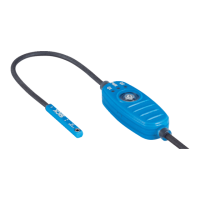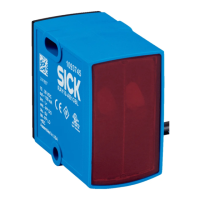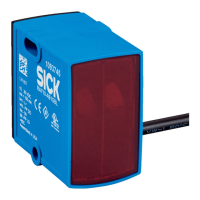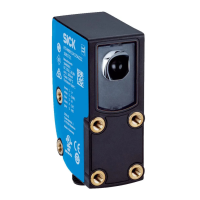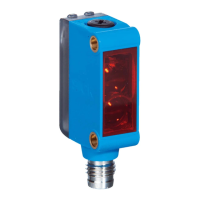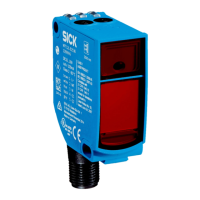8.4.3.10 Switching point tolerance
The switching point tolerance specifies the capture range in which a stop has an effect
(switching output switches). The switching point tolerance can be set after dynamic
teach-in via index 171 (0xAB) Switchpoint tolerance [x10µm].
NOTE
This applies to Move and Grip modes only.
A detailed explanation can be found in section 3.3.5 and section 3.3.6. After a dynamic
teach-in, the switching tolerance is 1mm. The switching tolerance can be adjusted
in 10µm increments. After a manual teach-in, the concept of switching point width
applies rather than switching point tolerance.
8.4.3.11 Switching point width
After a manual teach-in, the width of the taught-in switching points can be determined
via index 170 (0xAA) Switchpoint width [x10µm]. The default switching point width is 2mm
and the maximum switching point width is 10mm.
NOTE
This applies to the Cylinder switch mode switching point mode only.
8.4.3.12 Alert notifications
The process data can be set to alert notifications instead of switching points using the
settings accessed via index 67 (0x43) Process data user definition. By default, the alert is
not output via the process data, but can be read via index 4400 (0x1130) Actuator alerts
and additionally also via index 4370 (0x1112) DD - Alert flags. The output via the process
data has the advantage that the alert notifications do not have to be checked manually,
but are transferred on a regular basis.
•
53 = Group Alert: Leakage (type: event)
•
60 = Group alert: Cycle time (type: event)
•
65 = Direct alert: Operating hours max. (type: event)
•
68 = Direct alert: Power cycles max. (type: event)
•
69 = Direct alert: Cycle count max. (type: event)
•
90 = Direct alert: Total actuator travel max. (type: event)
An alert delay time can be set for the alert notifications via index 4842 (0x12EA),
subindex (0x01) Alert delay time [ms] and an automatic alert reset via subindex 2 (0x02)
Automatic alert reset time [ms].
The alert delay time in ms is the time by which the alert bits are delayed. An alert is only
output if the corresponding alert condition is met for longer than the alert delay time
defined here. The alert delay time can be set between 0 and 1,000s in ms increments.
The configured alert delay time only affects alert notifications of type “Status”. Alert
notifications of type “Event” occur immediately after falling below or exceeding the
configured limit. The automatic alert reset specifies the time after which alerts are
automatically reset if the alert bits in the process data do not change.
The automatic alert reset can be set between 0 and 1,000s in ms increments. A
negative value deactivates the automatic reset of alert notifications. By default, these
two functions are not active.
8.4.4 Actuator diagnostic functions
During the application, the MPS-G Smart Sensor also monitors:
8 OPERATION
44
O P E R A T I N G I N S T R U C T I O N S | MPS-G with 2/3 switching points and IO-Link (up to 8 switching points) 8028195/2022-11-30 | SICK
Subject to change without notice
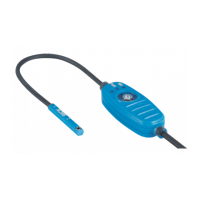
